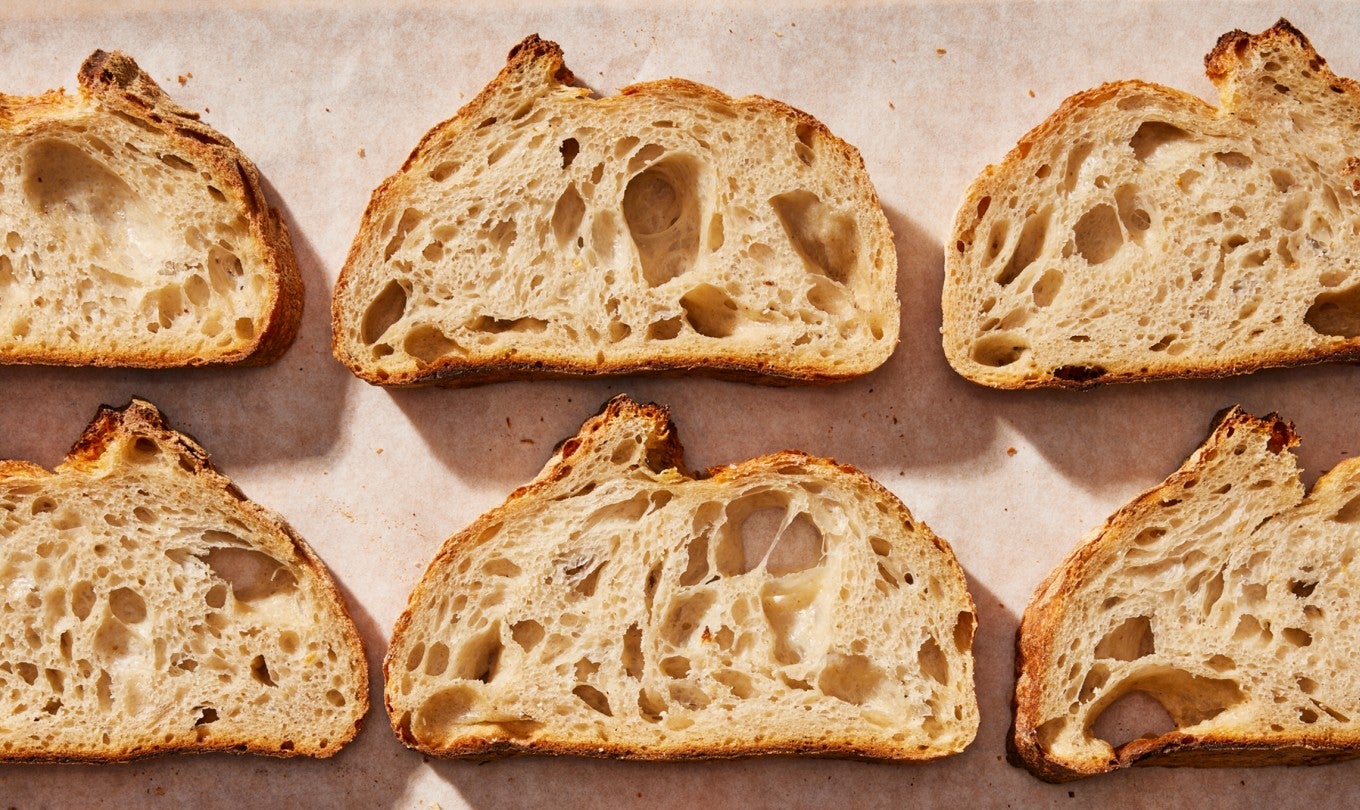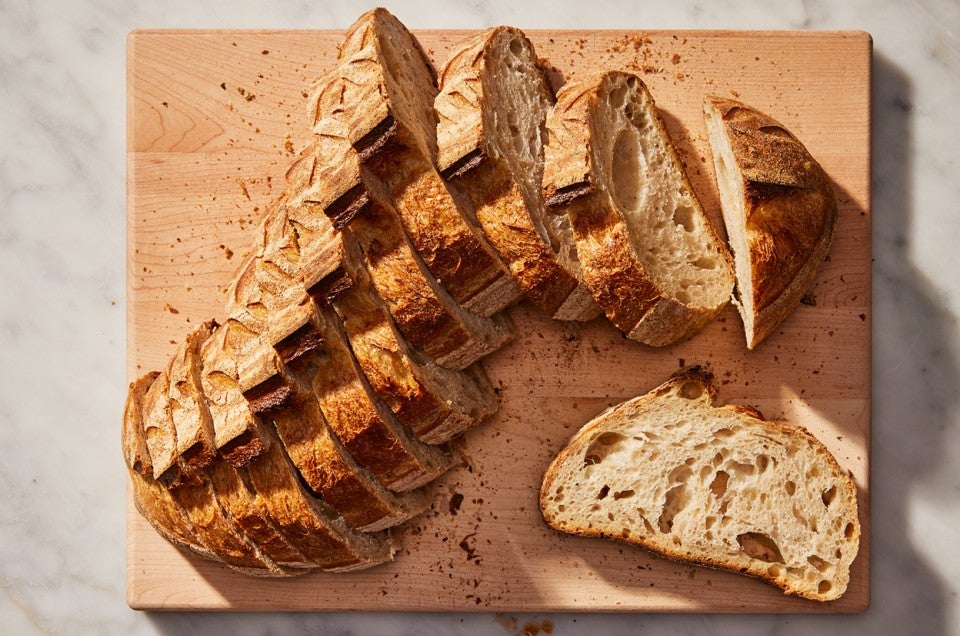-
Combine all the ingredients in a large bowl or extra large (6-quart) dough rising bucket. It's fine to use sourdough starter straight from the refrigerator if that's where you keep it, though it's best if you've fed it at least once in the past week.
-
Mix the ingredients by hand until the dough forms a shaggy mass and the flour is hydrated. Cover the bowl or bucket and let the dough rest at room temperature for 15 minutes.
-
Fold the dough by grabbing a section from one side with a wet hand, lifting it up, then pressing it down to the middle to seal. Repeat this with the remaining three sides of the dough. Cover and let it rest for 15 minutes.
-
Fold the dough two more times, giving it a 15-minute rest between the two, for a total of three sets of folds in 45 minutes. As you perform the folds you’ll notice that the dough smooths out, gaining strength and becoming elastic.
-
Cover the dough tightly after the final fold and leave it at room temperature (approximately 72°F) for about 12 hours. It's helpful to mark the height of the dough (use the markings on the bucket or a large rubber band around your bowl) to gauge how much it rises.
-
Turn the dough out onto a lightly floured or greased surface and divide it into two roughly equal pieces. Gently form the pieces into rounds, cover them, and let them rest seam-side down for 10 minutes.
-
Generously dust two lined brotforms or towel-lined large bowls with whole wheat flour.
-
Shape the loaves into tight rounds (boules), place them seam-side up into the prepared brotforms or bowls, and cover them with a plastic bag or shower cap.
-
If your dough doubled (or came close to doubling) during the 12-hour rise period, immediately place the boules into the refrigerator. But if your dough was a bit more sluggish, let the boules rest at room temperature for 30 to 60 minutes to give them a head start on the second rise.
-
Let the boules rest in the refrigerator for 8 to 12 hours, depending on your schedule (not theirs!).
-
When you're ready to bake, place two Dutch ovens or other lidded bread bakers onto a rack set in the lowest third of the oven. If you just have one Dutch oven or don't have room for two in your oven, you can certainly bake one loaf at a time, leaving the other in the refrigerator while the first one bakes. Preheat the oven (and Dutch ovens) to 500°F for 45 minutes (you'll want to ensure that they're tough enough to withstand preheating; not all are).
-
Turn each loaf out onto a piece of parchment paper and slash them with a lame or sharp knife.
-
Remove the preheated Dutch ovens from the oven. With the help of the parchment, carefully transfer the loaves to the Dutch ovens.
-
Cover the Dutch ovens with their lids and place them in the oven.
-
Immediately reduce the oven temperature to 450°F and bake the covered loaves for 20 minutes. Remove the lids from the Dutch ovens and bake the loaves for 20 to 25 minutes uncovered, until they're a deep golden brown.
-
Remove the loaves from the oven and carefully turn them out of the Dutch ovens onto racks to cool completely. If you're baking one loaf at a time repeat the process with the second loaf, preheating the Dutch oven if necessary.
-
Store leftover bread, loosely wrapped, for several days; freeze for longer storage.























